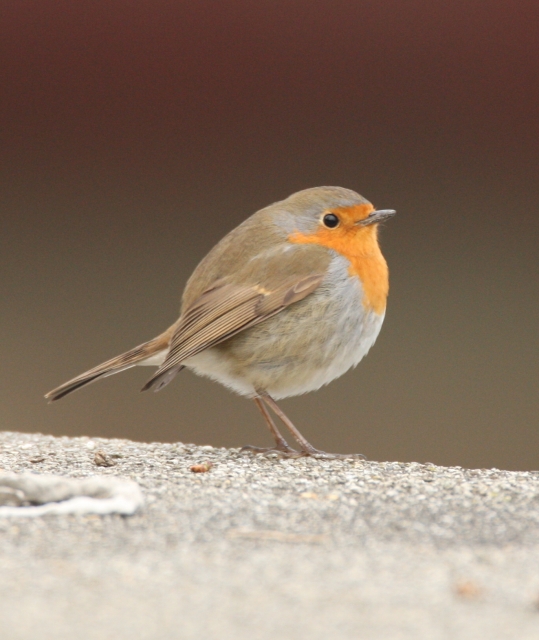ROBIN (Erithacus rubecula) - Rouge gorge
Summary
The Robin has to be one of the most familiar birds to everyone. Not only does it grace the front of many Christmas cards, it is the archetypical garden bird and visitor to winter feeding tables. It is found throughout Switzerland up to about 2000m and is common throughout many different habitats.
The Robin has to be one of the most familiar birds to everyone. Not only does it grace the front of many Christmas cards, it is the archetypical garden bird and visitor to winter feeding tables. It is found throughout Switzerland up to about 2000m and is common throughout many different habitats.
The song is very difficult to describe, it is so completely variable there is no real pattern that can be identified. It ranges up and down the scale, including some very high notes in excess of 10 Khz, often with big jumps in frequency. It is also known to mimic other species, but seems to take phrases from other species and adapt them to its own needs, so even the mimicry can be hard to pin down. However the song of the Robin in all cases is to me a rather watery, apologetic, melancholy song and it is this "quality" aspect which identifies it most readily to my ears:
Here is the sonogram of just two phrases with the time between them shortened, you can see the jumps in frequency:
Why this bird is so associated with winter I am not sure. It may be because it has the unusual habit of defending winter territories around food supplies, it uses the red breast in display behaviour and sings throughout the winter; so we are usually aware of its presence at a time when other birds are largely silent. (Incidentally people often tell me about how "fat" their garden Robin is, but that is simply because they erect their feathers in winter to improve insulation to avoid freezing to death - their shape is not related to their condition !).
The books tell me that winter song is more melancholy than summer song, and I think that is correct, but I do not actually have the evidence in my collection at the moment as I lack winter recordings of this bird. That previous recording was made in March - at at the end of the winter, this next one was made in May at the start of summer:
Did that sound more aggressive than the earlier one ? Maybe it does a little, but I need to investigate this a bit more in future winters I think.
(When alarmed it does a high-pitched (up to 8Khz) "tick" sound both single and repeated, often making a little jump when doing so -here are two birds having a territorial dispute in the early morning as the forest wakes up after an overnight snowfall:





